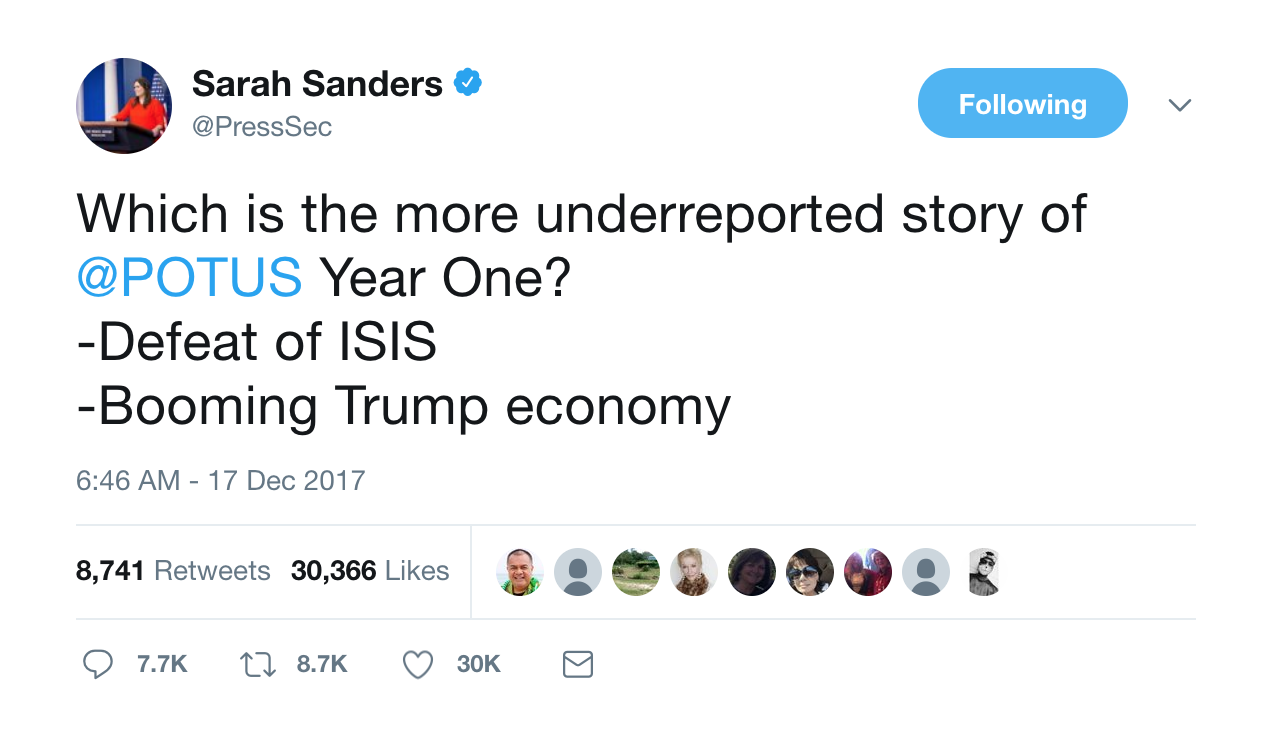"As we rebuild America's strength and confidence at home, we are also restoring our strength and standing abroad."
Context: The size of the active duty military has decreased in a consistent overall trend following the last spike in personnel during the height of the Vietnam conflict in 1968, when there were 3.5 million active service members. Institution of the Budget Control Act in 2011 disrupted long-term planning because of its hard caps, although the U.S. retains its status as the most powerful fighting force in the world, according to almost every independent military expert.
Think about it: Defense officials may be eager to seize the moment under a growth-friendly administration, but neither the National Defense Strategy (NDS) nor the NSS have outlined how to grow the force effectively. Growth for the sake of growth won’t help make the force readier if there is no methodology to the expansion.
"I am asking Congress to end the dangerous defense sequester and fully fund our great military."
Context: Blame for the inability to modernize the military and maintain personnel standards has largely been placed on the Budget Control Act of 2011, a bipartisan agreement establishing budgeting caps that constrain military spending. The BCA fixes a ceiling for the growth in military spending that has little to do with any real-world needs or changes in circumstances. Combined with the general inability to nail down budgets early in the fiscal year, this leads to erratic training cycles, shortfalls in supply, and a general sense that the basics of the military business are not being met.
"Around the world, we face...rivals like China and Russia that challenge our interests, our economies, and our values."
Think about it: Because the U.S. is China’s top trading market, and Russia is occupied with a backpedaling economy, all-out war between superpowers is relatively unlikely. Where it becomes tricky is the potential for proxy wars to play out on the Korean Peninsula or in the Middle East, locations where current alliance structures pit the U.S. against Russia and China.
Bottom line: In a great power competition, the least of the consequences is probably increases to the defense budget. Declining international influence, loss of markets, the opportunity cost of capital, entangling alliances, etc., all could weigh more heavily on the US than mere military spending.
"Past experience has taught us that complacency and concessions only invite aggression and provocation. I will not repeat the mistakes of the past Administrations that got us into this dangerous position."
Context: Complicating the situation is the potential for conflicts with these “rogue nations” to catalyze revisionist-power conflicts. China has a tenuous alliance with North Korea, and Chinese nationals were recently caught providing aid to North Korea, violating United Nations sanctions. There has also been speculation that once North Korea establishes its capabilities, it could sell its WMDs to Iran. Russia also has a somewhat shaky alliance with Iran, and both nations have a military presence in Syria. The U.S. military is also operating in Syria. U.S-backed Kurdish militia are also frustrating neighbor nation and U.S. ally Turkey, which has always been at odds with the Kurds.
Think about it: National Security Advisor H.R. McMaster believes that traditional deterrence strategies won’t work against a regime like Kim Jong Un’s in North Korea. Trump has regularly disparaged the Iran nuclear deal, negotiated under the Obama administration, as a shoddy agreement that allows Iran to continue its development of WMDs. Iran has said that it will not accept any renegotiation of the deal. At the same time, there is a relative lack of specific data describing the extent to which these “rogue nations” have developed WMDs.
Trump discussed his military efforts in the Middle East disproportionately in comparison to his administration’s National Security and Defense Strategies, which largely focused on Russia and China. But even his slight references to “rival” and “rogue” nations as well as his calls to “rebuild” and “modernize” the military reflect his adminstrations complicated strategic position, which could result in a costly and expensive buildup of the armed forces and engagements in conflicts abroad.



